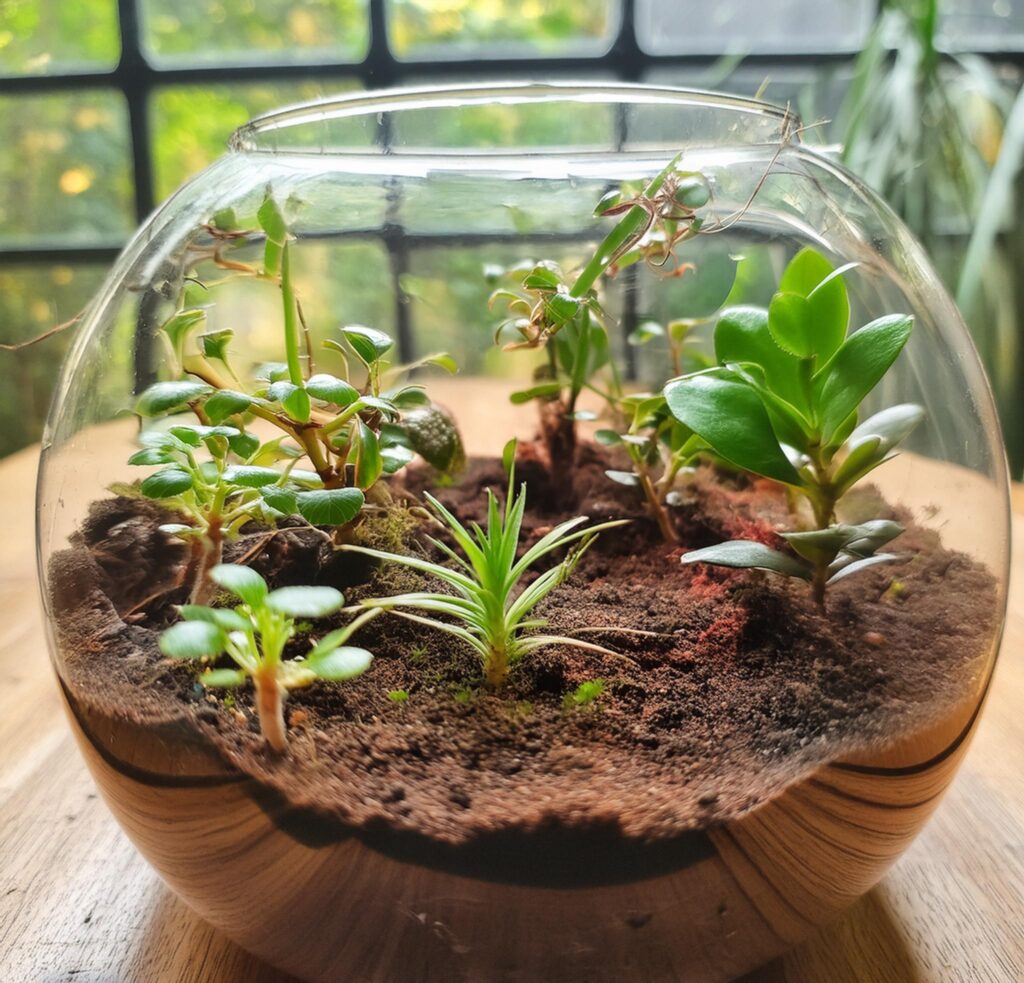
In a quiet corner of my home, nestled between the sunlight streaming through the windows, lies my favorite terrarium. It’s a little world of green, brimming with life, and it’s where my journey into plant propagation began. Let me take you on a stroll through my adventures in growing and multiplying these delightful plants.
The Tale of Fittonia
My story begins with Fittonia, also known as the nerve plant. It’s a showstopper in the terrarium world with its striking leaf patterns. One day, I noticed my Fittonia had started to overgrow its tiny home. Instead of trimming it back and discarding the cuttings, I decided to try my hand at propagating them.
I gently picked up my scissors, feeling a mix of excitement and nervousness. Snip, snip! I trimmed a few cuttings, not worrying too much about precision. The stems were just the right length—not too short, which would have made the process a bit tricky.
With the cuttings in hand, I carefully planted the stems up to the first set of leaves into the moist terrarium substrate. Weeks passed, and to my delight, the cuttings took root and flourished. It was like watching a miracle unfold.
For those who prefer growing plants outside a terrarium, here’s a little trick I discovered. Fill a small pot with sphagnum moss or terrarium substrate and plant the stem just as I did. To keep the cuttings from drying out, I placed the pot inside a smoothie cup with a lid. This created a mini-greenhouse effect, perfect for propagation.
Peperomia’s Transformation
Next, let’s talk about Peperomia, another favorite of mine. These plants, with their large, independent leaves, are a joy to propagate. One bright afternoon, I decided to take some cuttings from a particularly lush Peperomia in my terrarium.
Snip! With a steady hand, I cut several stems, ensuring they weren’t too short. Each leaf held the promise of a new plant. I filled a pot with sphagnum moss and gently planted the stems. To my amazement, new growth soon sprouted from the moss.
But the story doesn’t end there. I discovered another method: water propagation. I filled a small jar with water and placed a Peperomia stem inside. Within days, roots began to grow from the bottom of the stem, followed by tiny, baby leaves. It was a magical transformation, a testament to the resilience and beauty of nature.
Ficus Quercifolia’s Journey
Our final tale features the Ficus quercifolia, or oak leaf creeping fig. This plant, with its charming leaves, was next on my propagation list. Armed with scissors, I took cuttings from the mother plant, ensuring each had four to six leaves.
In the terrarium, I simply placed the cuttings on top of damp substrate. Roots soon emerged, and new growth followed, as if by some unseen hand of nature. For propagation outside the terrarium, I filled a pot with damp sphagnum moss and gently laid the cuttings on top, pressing them down slightly.
To maintain the humidity, I placed the pot inside a smoothie cup or a large plastic tub. This created a perfect environment for the cuttings to thrive.
Throughout this journey, I learned a few valuable lessons. Providing bright, indirect light or using LED lights helps the plants grow strong. Patience is key—not every propagation will be successful, but taking multiple cuttings increases the odds.
In the end, the joy of watching new plants emerge from simple cuttings is unparalleled. It’s a reminder of the magic of life and growth. If you found this story helpful, let me know if there are other plants you’d like me to cover.Happy gardening, and may your terrarium always be full of life and wonder!